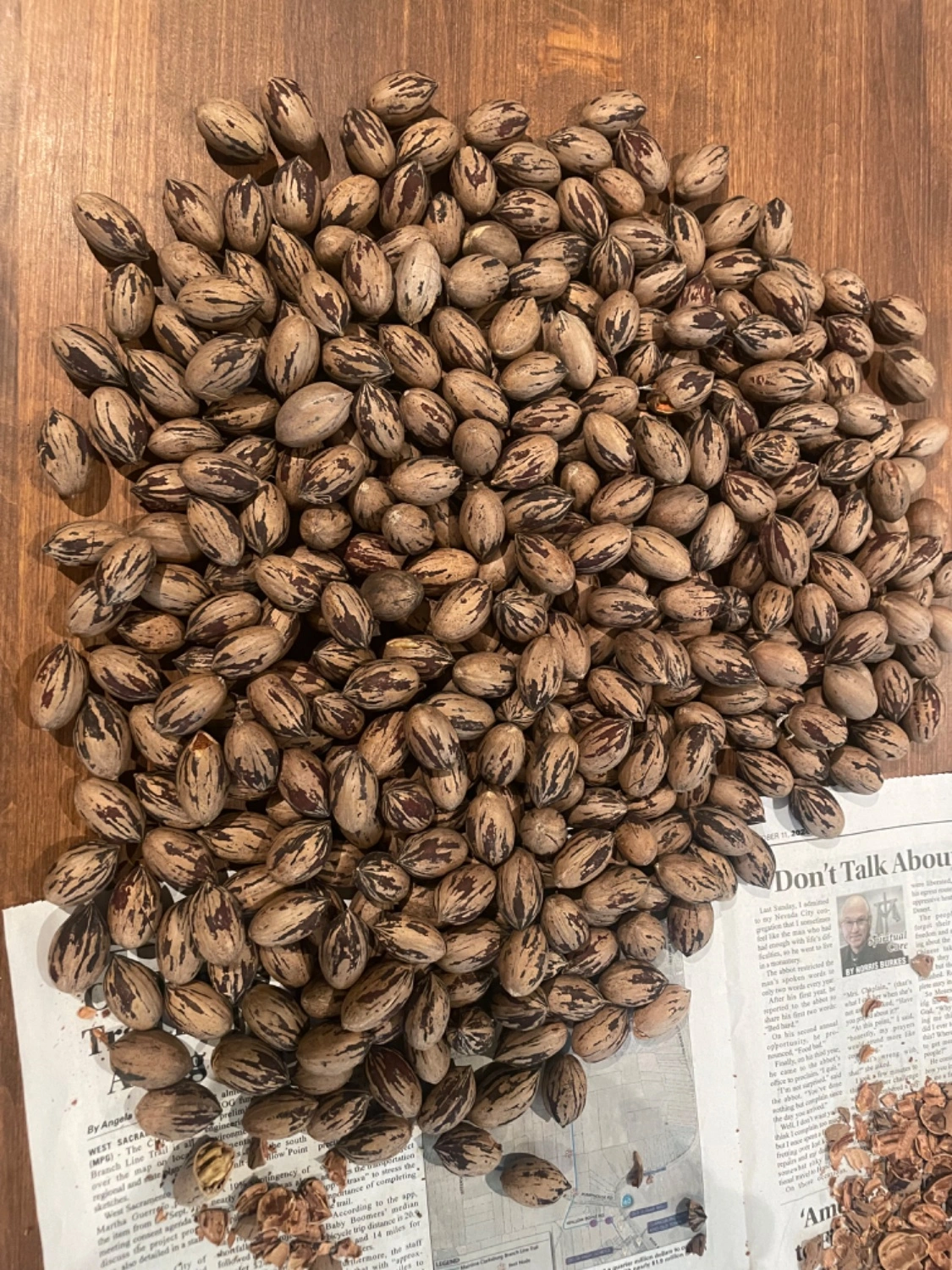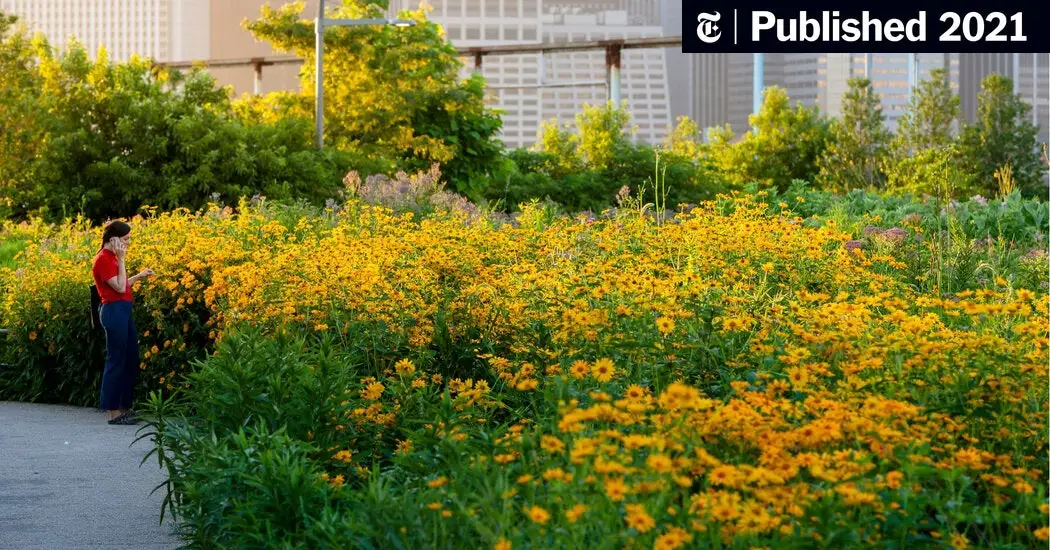No, just Elon threatening himself.
I’m sure it does vary—my impression is that N fixing trees in particular are going to have higher N levels in the leaves they drop but I’m sure it varies by species as well.
But from my experience, most urban shade trees don’t really need to be fertilized unless they are exhibiting symptoms of nutrient deficiency—and even then, this is often a symptom of poor soil and root health overall more than a specific lack of a nutrient. Most urban soils tend to be fairly high in nutrients due to air pollutants, excess fertilizers, pet feces, etc. I’m sure this can also vary by soil type and climate, but it’s true in most areas I’m familiar with.
Hi, arborist here! Fallen leaves are generally pretty low in nutrients--trees send back as much as they can into the tree before dropping them. So, you probably don't need to fertilize shade trees whether they stay or go. The bigger issue is that removing a huge input of carbon into the soil leaves you with low organic matter and lowered ability to retain what nutrients do exist. This poor soil quality will stress your trees, but adding fertilizer doesn't address the root issue.
Fruit trees generally do need to be fertilized since fruits are much higher in nutrients and are not generally returned to the soil unless you're doing some kind of poo composting scheme.
Too many leaves will definitely kill the grass.
Whether that's a bad thing is a separate question.
#killyourlawn
Haha the first half of this is actually good advice.
We had the same issues here but then made them much worse by canceling virtually all rail lines and even tearing up a lot of the track in many places. So same situation with air travel almost always being cheaper and faster and on top of that rail travel only connects major cities and can’t connect to smaller cities and towns at all.
It’s awful and geographically most urbanized areas in the US are built this way. Thank god for the small areas that were built before cars were invented. I live in one and while we still have huge negative impacts from car infrastructure at least walking and biking are viable alternatives here, even if the system doesn’t put them first.
The US is truly a shithole country.
If you’d like to learn more in video form: https://youtu.be/vEnh63g_ano
I agree that people here are uncritically regurgitating propaganda but of course liberals are also guilty of this. Frankly, it’s fairly difficult to avoid in this era. Most sources of information are controlled by or at minimum influenced by various powerful forces in society, each with their own interests.
I guess it is a little more surprising to see people absorbing propaganda from hostile foreign nations than from their own. But another part of me thinks I’m not being critical enough of the idea of nationalism which is a harmful and largely fictional concept.
I’m not sure if I agree that they haven’t worked. The severity of climate change has been significantly reduced by currently enacted policies, even as the situation continues to look fairly dire.
Like any mass movement, the effectiveness of these actions depends on the number of people engaged in them. To date, this movement has been fairly small compared to other movements that succeeded in bringing about similarly large changes. Furthermore, while blowing up a pipeline might have a more tangible and direct impact, that impact is still very small, and the political implications are complicated. The idea that fossil fuels can be stopped completely through sabotage seems at least as far-fetched as the idea that it can be stopped through letter-writing.
Given that situation, the main question becomes: how does this movement grow large enough that its demands must be answered fully? I think a clear and coherent message and political strategy is essential. Framing the issue as one of ordinary people fighting for children and the common good against the interests of a corrupt elite is usually beneficial. I worry that property destruction undermines this framing by defining the movement in public consciousness as violent extremists instead of a movement that is fighting to protect ordinary people. I think this was a major failing of the George Floyd protests which had widespread public support until they were successfully smeared as lawless rebels who engaged in looting and arson. Even though very few people engaged in this behavior, the right’s media dominance allowed them to convince many people that this was the whole movement and it lost support for its demands.
I can’t tell if you’re joking but very few organizations are doing that sort of action which is generally quite risky. There are a range of actions between the sort of personal responsibility actions you’re doing and outright sabotage. I know people here are generally dismissive of these but letter-writing, petitions, marches, etc. can all be effective parts of a political movement, as can more radical actions like blockades or strikes.
Personally, I think sabotage has to be carefully considered in the context of a broader campaign or it risks becoming an element of reactionary propaganda. It doesn’t help that our culture has for decades, perhaps centuries conflated property damage with violence against people, and this often makes people unsure if those who engage in the former might also engage in the latter. While I could see that sabotage might be morally justified in some situations, it’s not clear that it’s the correct tactic when the climate movement is as small and weak as it is right now.
Individual actions are a distraction. Only collective action can change the course of society.
I highly recommend looking into what local groups are working on this issue in your area and sign up.
It doesn’t, but keep in mind that most weeds grow from seeds or roots in the immediate vicinity of where they end up. Even if you wipe out all of the above-ground weeds, there are typically thousands of dormant seeds and root fragments that will rapidly repopulate the area in response to the soil disturbance and lack of competition after this removal.
Proper sheet mulching prevents these roots and seeds from immediately repopulating the space. You’ll still have weeds invading from border areas and the occasional long-term dispersal but these will be much smaller in numbers and more easily handled by other methods. If the latent weed population in a larger space can be eliminated then the amount of weeding needed can be very low.
Also, very few weed seeds can establish in more typical mulch material like straw or wood chips. Thick layers of organic material require a large energy reserve to push through, usually provided by an existing root system. So once the process is completed, you can prevent recolonization with more ordinary mulching methods, though you’ll still have to fight at the borders if large weed populations exist there.
Most of the users people are complaining about are very obviously not bots though. After investigating and interacting with them, I’ve universally found that they’re just weird, terminally online people with extreme views.
Actually, an offline friend of mine was recently accused of being an online shill. I’ve been pretty skeptical of these claims for a while but having a case with definitive proof has lost me all patience for these types of accusations. There’s just no point in accusing people like this unless you have actual proof. Most people are very very bad at distinguishing real users from propaganda.
That makes sense. I’m not sure the plants I was growing would benefit from fertilizer though. A lot of urban soils are overly rich for our native plants here anyway.
I doubt those people are even aware of Lemmy, let alone hiring teams of people to post here. But regardless of how plausible it is, this is just speculation with no evidence behind it.
That which is asserted without evidence can be dismissed without evidence.
Highly doubtful. The amount of time, money, and effort would be much better spent elsewhere. Lemmy’s audience is very small.
I would argue it’s more misleading to not adjust for inflation.
Lol serious question: what’s the advantage of a seed bomb over just scattering seeds? I had some old wildflower seeds without a plan for what to with them so I scattered them around this fall before the rains but should I have made them into seed bombs instead of just direct sowing?
What about chaotic positivity? That’s more my vibe.
Going beyond hashtags and doing the real work of building community is our strongest defense against authoritarianism

The zoo's Urban Wildlife Institute recently captured North American otter images on its wildlife cameras for the first time in 14 years of biodiversity monitoring. Otters are a keystone species whose presence indicates that regional ecosystems offer safe spaces for wildlife.

Mirror: https://web.archive.org/web/20241122020217/https://www.lpzoo.org/otters-spotted-on-zoo-wildlife-cameras-for-the-first-time-in-chicagoland/
The season of abundance


I’ve got my work cut out for me. But the timing should be perfect with thanksgiving.
The city government will discuss a proposed state of emergency over pedestrian and cyclist safety just six days after the city’s 31st traffic death of 2024.
Anyone out there?
Know Nut November #11


As promised, a more difficult nut for today!
I will give this one 3/5 difficulty.
Photo credit: Lior Golgher, CC BY-SA 4.0 <https://creativecommons.org/licenses/by-sa/4.0>, via Wikimedia Commons
Hint:
spoiler
This nut is named for its most common country of origin.
🌰
Answer and some fun facts about this nut:
spoiler
It's a Brazil nut! Brazil nuts are fairly unique among nuts one might commonly see in a grocery store. They are not a domesticated crop like most other nuts, and are mainly wild-harvested from the Amazon rainforest. Some have advocated this as a model of a sustainable economic activity in the rainforest, but other studies have noted that in areas where nuts are heavily harvested, the regeneration of the species is poor.
🌰
Tune in tomorrow for more nutty knowledge!
Know Nut November #10


Despite their drab color, I find these quite beautiful!
I expect this one will be fairly easy, so the next one I post will be a bit harder.
Need a hint?
spoiler
It's in season right now, and is often cooked in a seasonal dish...
. . .
Photo by Geo Lightspeed7 - Own work, CC BY-SA 4.0, Click here for source and answer.
The sea is rising, and I have a lot of questions. Questions about sand movement, seawalls, nature-based climate solutions, ecosystem engineer plants, sand dunes, cl…

A conversation about adapting to sea level rise in California using nature-based solutions. Solarpunk even gets a shoutout.
Did the CIA Conclude That Stalin Wasn't a Dictator?

YouTube Video
Click to view this content.
An interesting overview of this CIA document which, if you’ve spent much time discussing politics on Lemmy, you’ve probably heard of. But the existence and meaning of the document is not as simple as many believe.
Why You Should Do Your Spring Planting in the Fall
Conventional wisdom says you should do the same tasks in the same order every year. The director of horticulture at Brooklyn Bridge Park has a better idea.

> Gardening is not so much about following rules, says Rebecca McMackin, as it is about following rules of observation. For Ms. McMackin, the director of horticulture at the 85-acre Brooklyn Bridge Park, that means keeping in mind goals that will support wildlife in the garden, and the greater ecology. > > >Rather than following the common practice of planting and transplanting in spring, for instance, she suggests shifting virtually all of that activity to autumn — and not cutting back most perennials as the season winds down.
cross-posted from: https://beehaw.org/post/16383867 >ghostarchive link here
Why Rewilding Should Be More Anarchist

YouTube Video
Click to view this content.
A video discussing the tension and trade offs between conventional rewilding and guerrilla rewilding.
Does Density Solve Affordability? Explaining New York and San Francisco

YouTube Video
Click to view this content.
A well-researched video that explains why some dense urban areas are quite expensive.
TL;DW: Despite a substantial historic housing stock, our most expensive cities have built very little housing in recent years, leading to very low vacancy rates and high prices. Ramping up housing construction will be a necessary part of solving the affordability crisis.
A new project has found that people living in neighborhoods where the number of trees and shrubs was more than doubled showed lower levels of a blood marker of inflammation than those living outside the planted areas. General inflammation is an important risk indicator for heart disease and other ch...

cross-posted from: https://slrpnk.net/post/13574268
> A really innovative study that went beyond statistical association and actually planted trees in low-tree neighborhoods and measured the impacts. > > >After the plantings, the research team reassessed residents' health. They found that those living in the greened area had 13-20% lower levels of a biomarker of general inflammation, a measure called high-sensitivity C-reactive protein (hsCRP) than those living in the areas that did not receive any new trees or shrubs. Higher levels of hsCRP are strongly associated with a risk of cardiovascular disease and are an even stronger indicator of heart attack than cholesterol levels. Higher CRP levels also indicate a higher risk of diabetes and certain cancers. > > >A reduction of hsCRP by this percentage corresponds to nearly 10-15% reduction in the risk of heart attacks, cancer or dying from any disease. > > >Although several previous studies have found an association between living in areas of high surrounding greenness and health, this is the first study to show that a deliberate increase in greenness in the neighborhood can improve health.
A new project has found that people living in neighborhoods where the number of trees and shrubs was more than doubled showed lower levels of a blood marker of inflammation than those living outside the planted areas. General inflammation is an important risk indicator for heart disease and other ch...

A really innovative study that went beyond statistical association and actually planted trees in low-tree neighborhoods and measured the impacts.
>After the plantings, the research team reassessed residents' health. They found that those living in the greened area had 13-20% lower levels of a biomarker of general inflammation, a measure called high-sensitivity C-reactive protein (hsCRP) than those living in the areas that did not receive any new trees or shrubs. Higher levels of hsCRP are strongly associated with a risk of cardiovascular disease and are an even stronger indicator of heart attack than cholesterol levels. Higher CRP levels also indicate a higher risk of diabetes and certain cancers.
>A reduction of hsCRP by this percentage corresponds to nearly 10-15% reduction in the risk of heart attacks, cancer or dying from any disease.
>Although several previous studies have found an association between living in areas of high surrounding greenness and health, this is the first study to show that a deliberate increase in greenness in the neighborhood can improve health.
Now, just months after the trail opened, its multi-million dollar bridge is still blocked off, broken beyond repair.

Shoddy construction. Very disappointing.
The influential idea that in the past men were hunters and women were not isn’t supported by the available evidence

cross-posted from: https://beehaw.org/post/15901115
The Legend of Zelda: The War in Hyraq

YouTube Video
Click to view this content.
cross-posted from: https://slrpnk.net/post/12967591
> A short film about war. Just watch it.
The Legend of Zelda: The War in Hyraq

YouTube Video
Click to view this content.
A short film about war. Just watch it.
Review of AI generated foraging Books and how they can kill you

YouTube Video
Click to view this content.
cross-posted from: https://lemmy.world/post/19329231
We’ve seen a lot of media chatter about these AI generated foraging books and unfortunately I think the danger is real. Be careful what information you absorb and make sure it is from a reputable source.
Although, to be completely fair, I’ve seen plenty of wrong or misleading information from books authored by humans as well.

